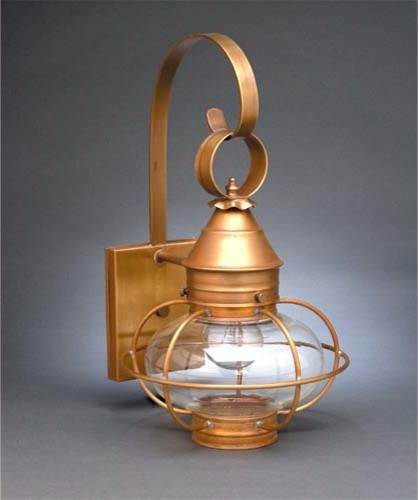Create an Old-World Charm in Your Home with Onion Lights

Onion lights are part of the architectural heritage of seafarers from Cape Cod, Massachusetts. With a growing interest in Colonial style home decor, buyers all over America are trying out these distinctive fixtures for their exterior and interior lighting.
Where did Onion Lights Originate?
Onion Lights were first used by whalers and seamen based out of the whaling towns of Massachusetts in New England. The original onion lights were heavy affairs, lit by whale oil. They were designed to have a measure of portability and could also be hung from the wall or rested on a level surface. A round glass orb was used for maximum light throw. As the glass industry advanced to thinner and lighter designs, protective rings were added to the onion lights so the glass would not crack on impact. While mariners started using them on land as well, these lights became as much a part of New England homes as shingles, clam chowder and gold-rimmed quarterboards.
Design and Materials Used in Onion Lights
Onion lights were originally designed for throwing light in all directions, which was especially useful on the open sea on whaling expeditions. Modern designs use clear or frosted glass. The lights had a heavy stand so the lamp could be rested on a table or the ground and would not easily topple over. The stand also served as the oil holder for the lamp wick. A round hole on the top of the lamp served to help hand the light off a chain or a wooden peg. While the earliest designs used tin, brass came to be adopted widely because of its durability and corrosion resistance. However years of use and salt air of the coast ensured the lamps would acquire a beautiful patina of age over the years. Of course, these days, arroyo craftsman and onion lights are powered by electricity. Because of the clear glass, homeowners may prefer to couple them with old-school incandescent lamps which also complement the design with their warm light and distinctive round shape. The finish on the fixtures can also be customized, with special artificial schemes resembling patina to match the decor and effect that buyers are looking for. The wooden peg has been replaced by a fixed curved iron piece connected the lamp to a matching plate or a chain for mounting to the ceiling. While some firms have switched to steel for these lamps, the best manufacturers still use handcrafted brass for authenticity.
Types of Onion Lights
The different kinds of onion lights include wall mounted fixtures, ceiling mounted lights, hanging fixtures and post mounted lights. Onion lights come in different sizes, including small, medium, large and extra large. The glass shape can be round or oval. Buyers can look for ribbed finish glass as an option for clear glass. For post mounted lights, a pole with matching paint and style will greatly complement the design of the onion lights. A variety of metal finishes can be ordered to give the fixture a distinctive appearance. These finishes are Antique Brass, Dark Brass, Antique Bronze, Dark Bronze, Verde Green and Gun Metal.
Tips for Installing Onion Lights
While onion lights started off as typical outdoor lighting, they are versatile designs that can be used both indoors and outdoors. However, the indoors pieces will be lighter and more delicate, while the outdoor pieces are built tougher to withstand hard weather conditions. One way to ensure onion lights catch the eye when installed as door lights is to make sure the lamp has a width about one-fifth of the door and the lamp sits at a height of approximately one fifth below the door frame. Onion lights are best used in pairs as door lights. However when using them in foyers or as hanging applications, the lights can be used singly for maximum effect. The old-world feeling of lamp wicks can be replicated with incandescent bulbs or warm-light LEDs which have a long life. Brass fixtures can be quite heavy, so make sure the mounting is perfect or get help to install the fixture safely. Onion lights can be complemented with other colonial touches like gold rimmed quarter boards as well as California Mission style decor for a contrasting look.







